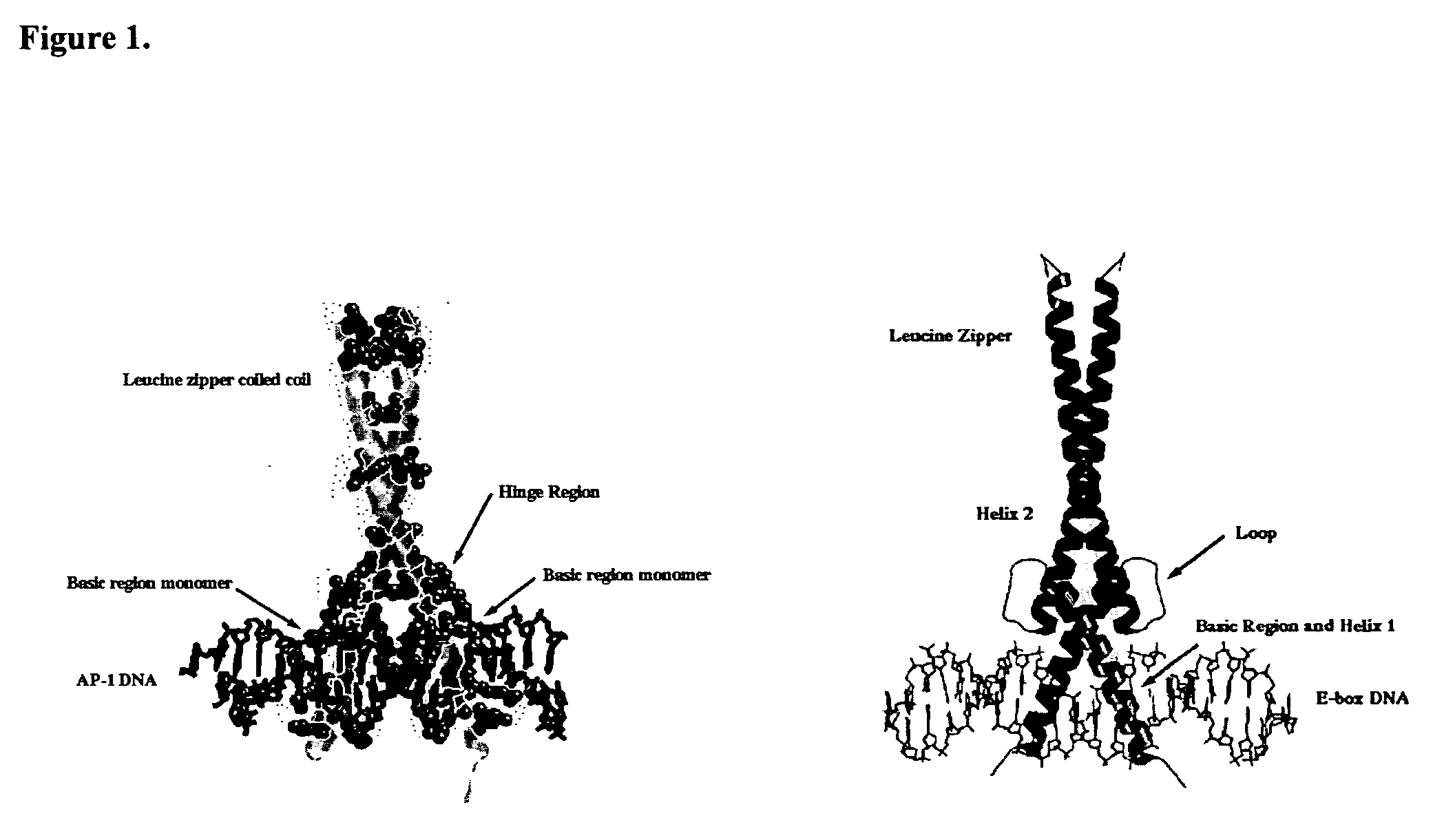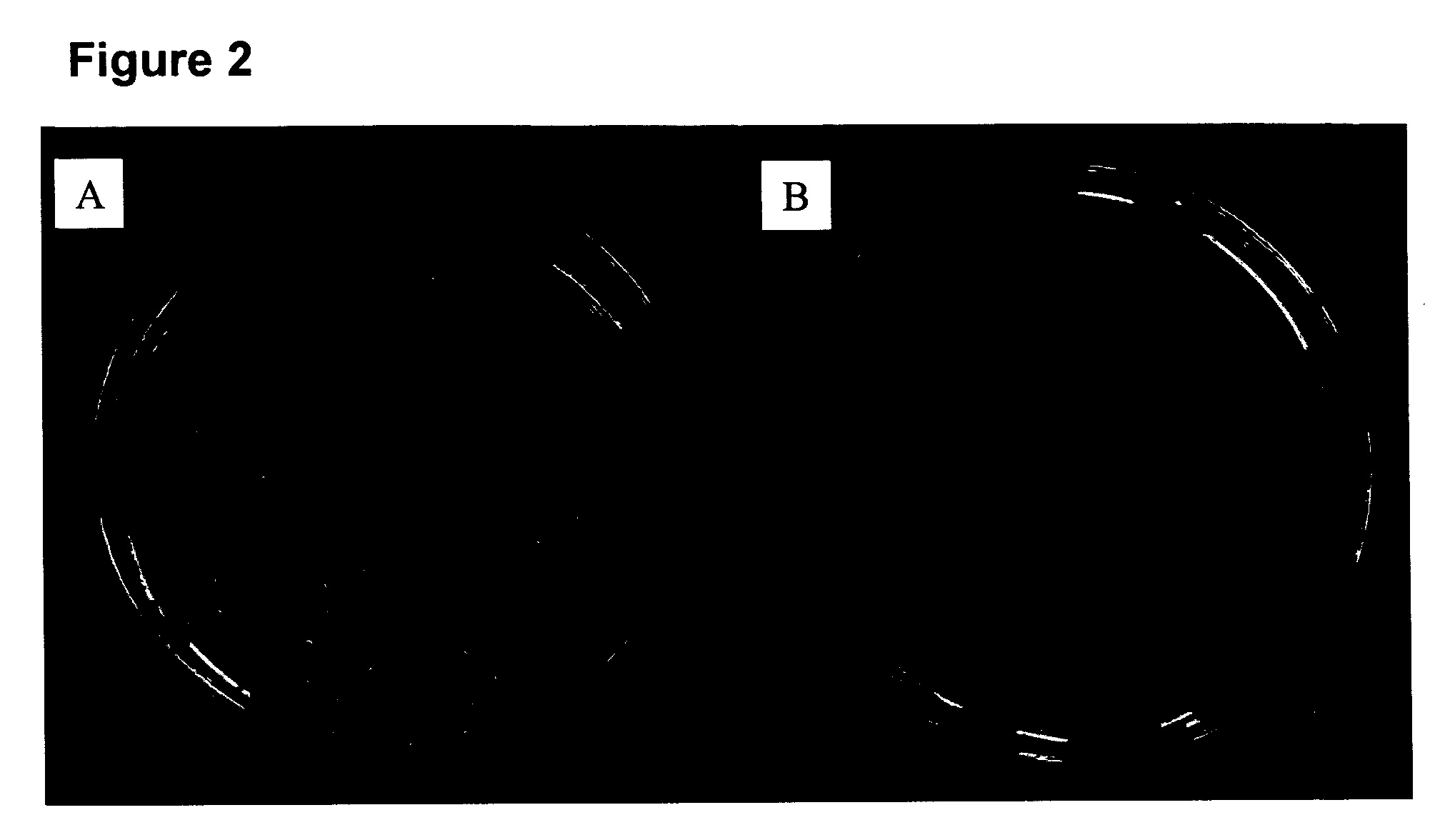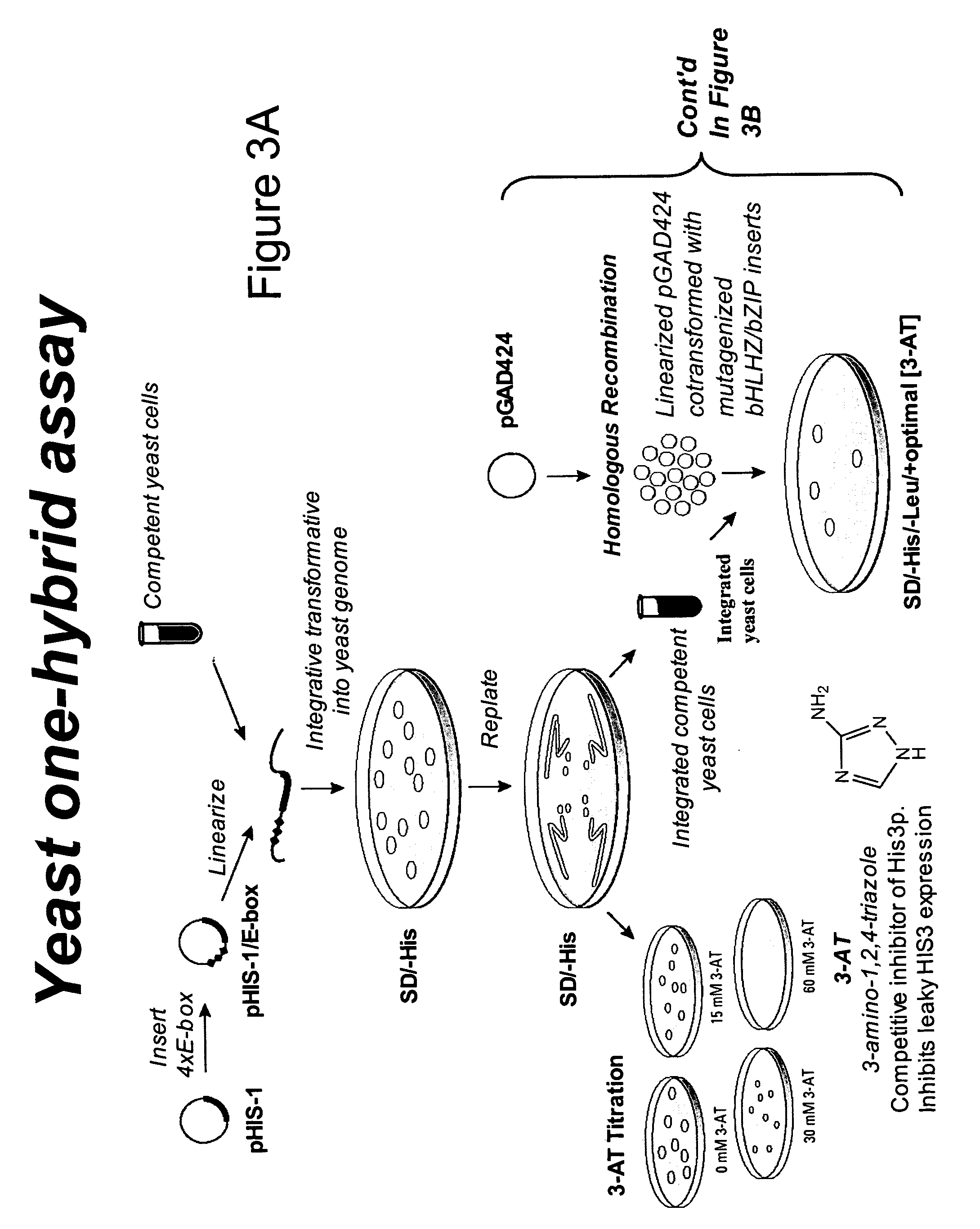Minimalist bZIP Proteins and uses thereof
a technology of bzip proteins and bzip peptides, which is applied in the field of minimal bzip proteins, can solve the problems of complex design of sequence-specific dna-binding proteins, e-box sites may interfere with myc's disease-promoting activities, and complex dimerization elements in bhlh, etc., and achieves the effect of simplifying molecular recognition
- Summary
- Abstract
- Description
- Claims
- Application Information
AI Technical Summary
Benefits of technology
Problems solved by technology
Method used
Image
Examples
examples
Generation of Max-CIEBP bZIP Minimalist Proteins:
[0139] The basic region of Max was fused to the leucine zipper of C / EBP. Three different fusion proteins were constructed Max-1, -2, -3 which differ by one amino acid in order to leave some flexibility in the hinge region—where the zipper is fused to the basic region, which splays out to straddle DNA. Table I shows the sequences of Max-1, -2 and -3-C / EBP with two different hinge regions, RIR and GIR, which are expected to have different helical capabilities. A BamH I site was used for joining the basic regions to the zipper regions. Because there are ˜3.5 amino acids per turn in an α-helix, Max-1, -2, and -3 should be sufficient for generating a protein capable of targeting the E-box site. Indeed, the Max-1-C / EBP has been evolved into MM3 which binds to the E-box.
Generation of Arnt-CIEBP bZIP Minimalist Proteins
[0140] Arnt is a bHLH protein (no leucine zipper). Arnt basic region binds 5′-GTG, half of the canonical E-box. Native. ...
PUM
| Property | Measurement | Unit |
|---|---|---|
| excited state fluorescence lifetime | aaaaa | aaaaa |
| temperature | aaaaa | aaaaa |
| temperature | aaaaa | aaaaa |
Abstract
Description
Claims
Application Information
 Login to View More
Login to View More - R&D
- Intellectual Property
- Life Sciences
- Materials
- Tech Scout
- Unparalleled Data Quality
- Higher Quality Content
- 60% Fewer Hallucinations
Browse by: Latest US Patents, China's latest patents, Technical Efficacy Thesaurus, Application Domain, Technology Topic, Popular Technical Reports.
© 2025 PatSnap. All rights reserved.Legal|Privacy policy|Modern Slavery Act Transparency Statement|Sitemap|About US| Contact US: help@patsnap.com



